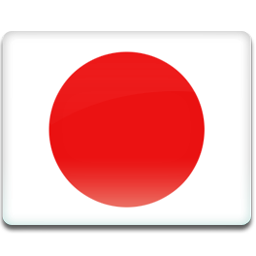>>>> China
China is one of the world's largest producers of yoga pants. Concentrated in Guangdong, Fujian, Zhejiang and other coastal provinces, these regions have a complete textile industry chain and efficient logistics system. In terms of environmental protection and social responsibility standards, Chinese manufacturers are also improving.
China's advantages in the production of yoga clothes can be concluded to several aspects:
1. Mature supply chain system
China has a very mature and complete textile industry chain. Thanks to the close and efficient cooperation between all links, if you maintain long-term cooperation with the factory in China, even if it is a very small order, such as 300 pairs of yoga pants, the factory may customize the color and fabric for you.
A factory that is willing to support you in the development of new models is very beneficial to good gym clothes brand building.
2. Rich production experience
Over the years, Chinese manufacturers have accumulated a lot of experience in textile design, production and export. Because of the ability to quickly adapt to market changes and customer needs, Chinese factories can produce yoga clothes that meet the requirements of the international market.
At the beginning of the establishment of the Kardashian brand Skim, one of the manufacturers cooperated with was from Yiwu, China.
3. Large labor force
China has a large labor market, which provides the necessary manpower for the production of yoga clothes. Even today, with rising labor costs, Chinese manufacturers can remain competitive by improving production efficiency and adopting automation technology.
4. Diverse product options
Thanks to technological improvements and design innovations, Chinese manufacturers are able to offer a wide range of products from entry-level to high-end yoga wear.
From lululemon 98$ legging to Amazon discount athletic wear, China can make them.
5. Fast manufacturing response speed
China's production system is able to respond quickly to market changes, which means that manufacturers can adjust their production lines in time when fashion trends change.
Many yoga pants factories are very welcoming to Tik Tok's orders and are willing to cooperate with Internet celebrities to give quick feedback and test the market.
For a factory, sales people can response to customer need as soon as we receive customer message.
6. Lower production costs
Despite rising labor costs, the cost of producing yoga clothing in China is still relatively low compared to many developed countries, making it more affordable in the international market.
7. Quality management is also an important aspect to consider in China's yoga wear manufacturing industry. More and more Chinese manufacturers are starting to adopt internationally recognized quality management systems, such as ISO certification, BSCI certification to ensure product quality.
Many major brands also impose strict quality control standards in their supply chains to ensure that the products under their labels meet the required quality and performance.
>>>> South Asian subcontinent
Countries such as India, Bangladesh and Pakistan have labor cost advantages and abundant cotton resources, but face challenges in environmental protection and workers' rights protection.
>>>> Southeast Asian countries
Countries such as Vietnam and Cambodia have become hot spots for yoga pants production in recent years due to their low labor costs, favorable trade policies, and increasingly improved production technologies.
Driven by low-cost labor and policy incentives, the textile industry in these countries is developing rapidly and is becoming an emerging force in yoga pants production. With the growing concern about labor rights, they are also facing the challenge of improving the working environment and protecting the legitimate rights and interests of workers.
Approximately 33% of Lululemon's products are manufactured in Vietnam, indicating that Vietnam is an important production base for the brand.
There are several manufacturers in Vietnam that specialize in yoga leggings, such as Thygesen Textile, which can produce knitted seamless leggings.
There is also Thai Son S.P, which also produces seamless yoga pants. We don't know what their MOQ is. For such a well-known large garment factory, the MOQ is often very high, and the MOQ may be in 10,000 pieces.
>>>> Made in Europe
Special technical fabrics and advanced production techniques are widely used in countries such as Turkey, Portugal and Italy. Manufacturers in these countries tend to focus on high end athletic wear and innovatively designed products, while at the same time leading the way in environmentally friendly production.
There are many eco-friendly women's activewear brands in Turkey, such as Lando Studio, which focuses on sustainable yoga wear. Omnitom Yoga Wear, created by Teodora Ratcheva, focuses on organic clothing. There is also Niyama Sol that uses recycled plastic bottles to make yoga clothes.
>>>> Made in the Americas
The United States and some countries in Central America, such as Mexico, are also involved in the production of yoga pants. Despite the high labor costs, its proximity to the U.S. market makes it uniquely competitive in terms of responding quickly to the market and reducing logistics time.
The U.S. market has high requirements for the design and functionality of yoga leggings. While most of the production has moved overseas, there are still a handful of high-end designer gym wear brands in the U.S. that insist on local production. They emphasize the quality of the product and support for the local economy.
>>>> Production trends
Yoga pants production is gradually shifting to regions that offer higher productivity, lower environmental impact, and better labor conditions. Digitalization, automation and sustainability are the key factors in the choice of the future of yoga pants.
>>>> conclusion
The production of yoga pants is becoming more diversified and globalized, and the production regions are constantly adapting to the new needs of the global market. As brands place a premium on social responsibility and environmental standards, the global origin landscape of yoga pants is likely to continue to undergo restructuring and optimization.





